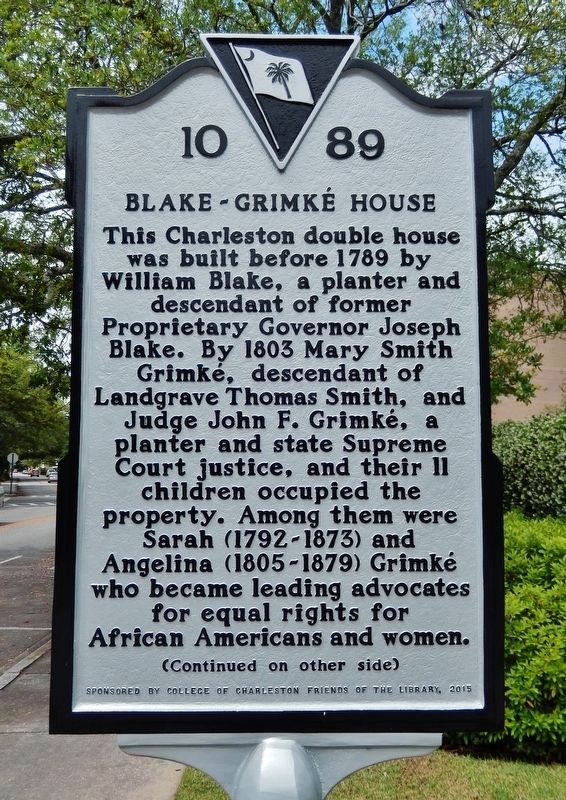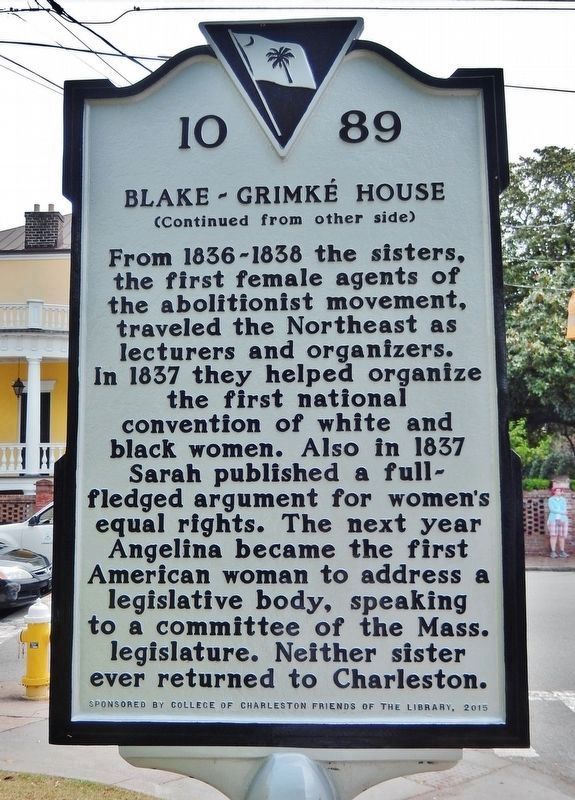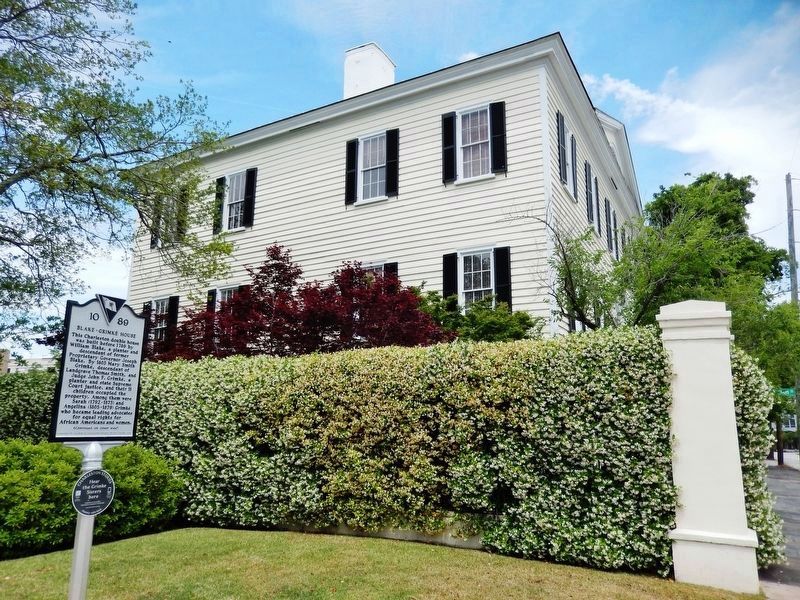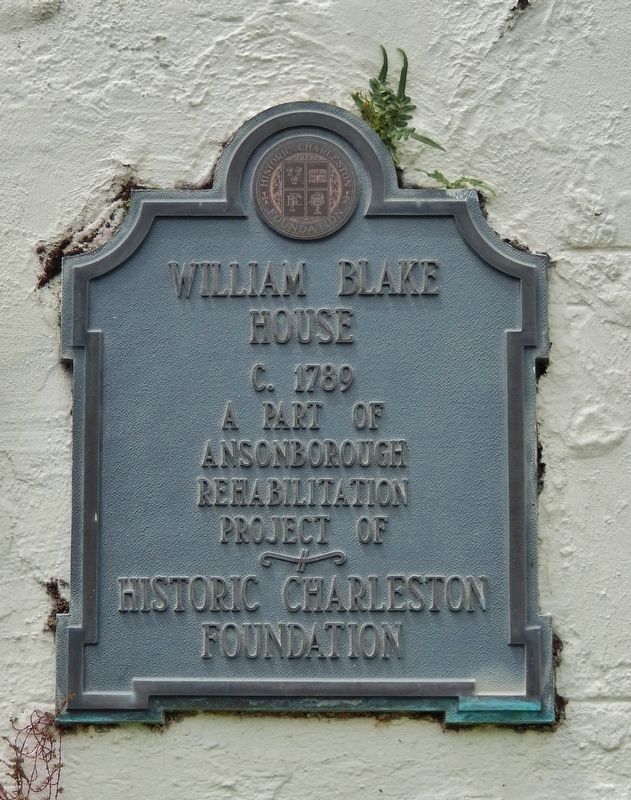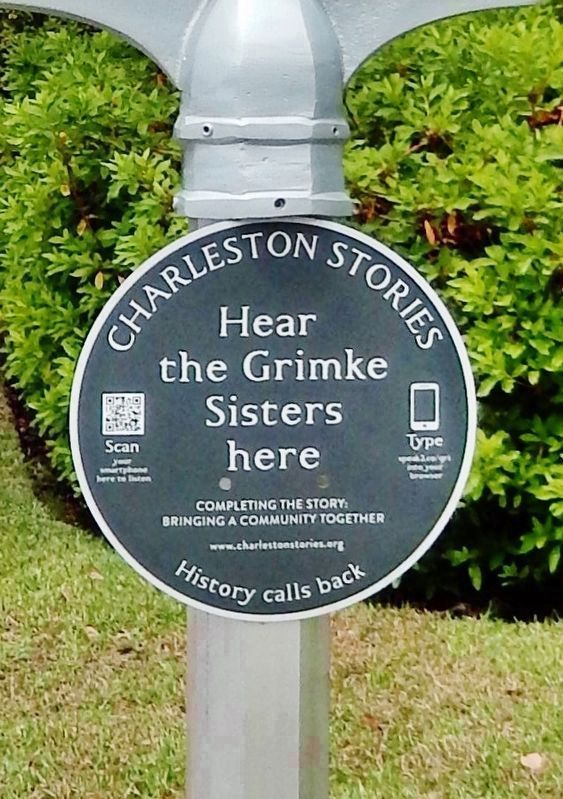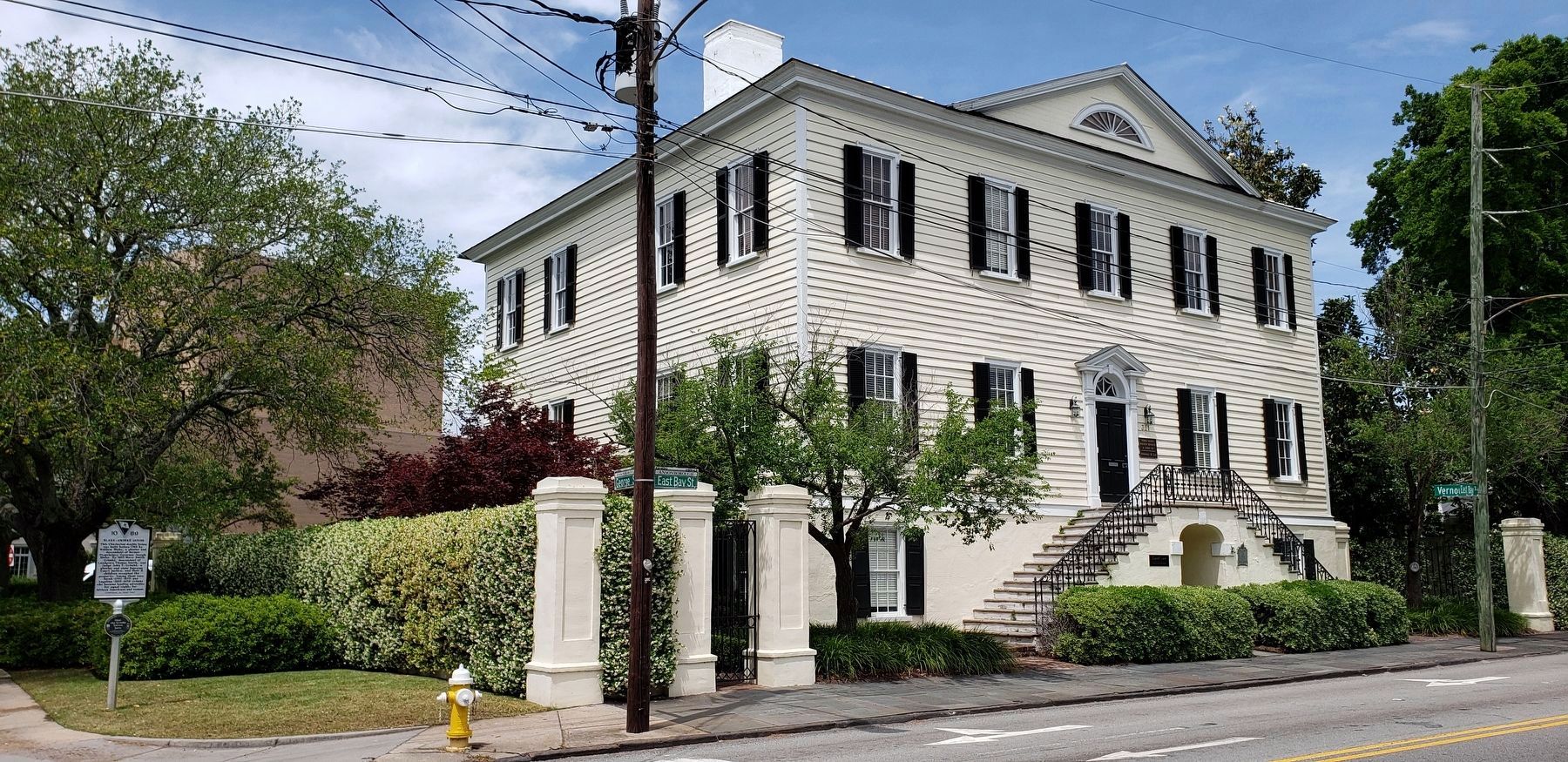Ansonborough in Charleston in Charleston County, South Carolina — The American South (South Atlantic)
Blake-Grimké House
Inscription.
(side 1)
This Charleston double house was built before 1789 by William Blake, a planter and descendant of former Proprietary Governor Joseph Blake. By 1803 Mary Smith Grimké, descendant of Landgrave Thomas Smith, and Judge John F. Grimké, a planter and state Supreme Court justice, and their 11 children occupied the property. Among them were Sarah (1792-1873) and Angelina (1805-1879) Grimké who became leading advocates for equal rights for African Americans and women.
(side 2)
From 1836-1838 the sisters, the first female agents of the abolitionist movement, traveled the Northeast as lecturers and organizers. In 1837 they helped organize the first national convention of white and black women. Also in 1837 Sarah published a full-fledged argument for women's equal rights. The next year Angelina became the first American woman to address a legislative body, speaking to a committee of the Mass. legislature. Neither sister ever returned to Charleston.
Erected 2015 by College of Charleston Friends of the Library. (Marker Number 10-89.)
Topics. This historical marker is listed in these topic lists: African Americans • Civil Rights • Women. A significant historical year for this entry is 1789.
Location. 32° 47.215′ N, 79° 55.758′ W. Marker is in Charleston, South Carolina, in Charleston County. It is in Ansonborough. Marker is at the intersection of East Bay Street (Business U.S. 52) and George Street, on the right when traveling south on East Bay Street. Marker is located beside the sidewalk, near the southeast corner of the subject house. Touch for map. Marker is at or near this postal address: 321 East Bay Street, Charleston SC 29401, United States of America. Touch for directions.
Other nearby markers. At least 8 other markers are within walking distance of this marker. The Benjamin DuPré House (within shouting distance of this marker); The Moses C. Levy House (about 500 feet away, measured in a direct line); The Borough Houses (about 700 feet away); a different marker also named The Borough Houses (about 700 feet away); St. Stephen's Episcopal Church (approx. 0.2 miles away); The Liberty Tree (approx. 0.2 miles away); 14 George Street (approx. 0.2 miles away); Dr. Joseph Johnson House (approx. 0.2 miles away). Touch for a list and map of all markers in Charleston.
Also see . . .
1. The Grimké Family Home (1803-1819). This house where the famous Grimké sisters grew up was a city house. The assumption
is often made that they grew up on a plantation. In their childhoods, their father, like most professional men of Charleston, owned a number of plantations that generated wealth for his family through the production of rice and cotton. The sisters’ main experience of slavery, as they once said themselves, was not of enslaved workers on plantations, but of enslaved house servants. (Submitted on May 11, 2019, by Cosmos Mariner of Cape Canaveral, Florida.)
2. 321 East Bay Street: Blake-Grimké House. Sarah and Angelina will always be known as Charleston’s famous abolitionist sisters who championed rights for women and for slaves. Born into a family of jurists and wealthy planters, the Grimké Sisters grew up in a culture served by enslaved African Americans. Their home at 321 East Bay had slaves as did the plantations owned by their father and brothers. Unlike most of Charleston society, the Grimké Sisters considered slavery to be anathema and were bold and outspoken about their views. (Submitted on May 11, 2019, by Cosmos Mariner of Cape Canaveral, Florida.)
Credits. This page was last revised on February 16, 2023. It was originally submitted on May 11, 2019, by Cosmos Mariner of Cape Canaveral, Florida. This page has been viewed 1,467 times since then and 204 times this year. Photos: 1, 2, 3, 4, 5, 6. submitted on May 11, 2019, by Cosmos Mariner of Cape Canaveral, Florida.
